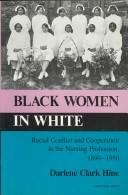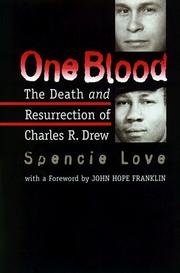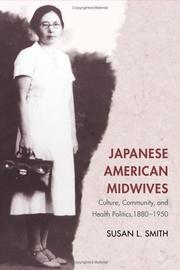| Listing 1 - 6 of 6 |
Sort by
|
Book
ISBN: 022613606X 9780226136066 9780226135908 022613590X Year: 2014 Publisher: Chicago London
Abstract | Keywords | Export | Availability | Bookmark
 Loading...
Loading...Choose an application
- Reference Manager
- EndNote
- RefWorks (Direct export to RefWorks)
In the spring of 1915, Chicagoans elected the city's first black alderman, Oscar De Priest. In a city where African Americans made up less than five percent of the voting population, and in a nation that dismissed and denied black political participation, De Priest's victory was astonishing. It did not, however, surprise the unruly group of black activists who had been working for several decades to win representation on the city council. Freedom's Ballot is the history of three generations of African American activists-the ministers, professionals, labor leaders, clubwomen, and entrepreneurs-who transformed twentieth-century urban politics. This is a complex and important story of how black political power was institutionalized in Chicago in the half-century following the Civil War. Margaret Garb explores the social and political fabric of Chicago, revealing how the physical makeup of the city was shaped by both political corruption and racial empowerment-in ways that can still be seen and felt today.
African Americans --- Politics and government --- Civil rights --- History --- Chicago (Ill.) --- Race relations --- Political aspects. --- african american, black experience, america, united states, politics, political, freedom, justice, injustice, oppression, chicago, abolition, slavery, great migration, history, historical, oscar de priest, community, elections, city council, activist, activism, social studies, true story, government, academic, scholarly, research, college, university, textbook, 20th century, urban, race, racism, racial relations, illinois, midwest, leadership.

ISBN: 0585211515 0253205298 9780585211510 0253327733 9780253327734 9780253205292 0253056950 9780253056955 Year: 1989 Publisher: Bloomington, Ind. Indiana University Press
Abstract | Keywords | Export | Availability | Bookmark
 Loading...
Loading...Choose an application
- Reference Manager
- EndNote
- RefWorks (Direct export to RefWorks)
African American nurses --- Nursing --- African Americans --- History of Nursing --- Race Relations --- History. --- history --- United States --- Race relations --- Relations, Race --- Nursing, History --- History Nursing --- History Nursings --- Nursing Histories --- Nursing History --- Nursings, History --- Nurses --- Nursing Care --- Americans, African --- Afro-American nurses --- Negro nurses --- Nurses, African American --- Psychology, Social --- African-Americans --- African-American --- African Americans in medicine --- Interracial Relations --- Racial Relations --- Interracial Relation --- Relation, Interracial --- Relations, Interracial --- Relations, Racial --- African American --- Afro-American --- Afro-Americans --- Afro American --- Afro Americans --- American, African --- Black Americans --- American, Black --- Americans, Black --- Black American --- African American nurses. --- Race relations. --- Integration, Racial --- Race problems --- Race question --- Ethnology --- Social problems --- Sociology --- Ethnic relations --- Minorities --- Racism

ISBN: 0807863068 9780807863060 0807822507 9780807822500 0807846821 9780807846827 9798890880710 Year: 1996 Publisher: Chapel Hill, NC
Abstract | Keywords | Export | Availability | Bookmark
 Loading...
Loading...Choose an application
- Reference Manager
- EndNote
- RefWorks (Direct export to RefWorks)
One Blood traces the life of the famous black scientist and surgeon Dr. Charles Drew and the well-known legend about his death. On April 1, 1950, Drew, then forty-five years old, died after an auto accident in rural North Carolina. Within hours, rumors spread: he had bled to death because a whites-only hospital refused to treat him.
Discrimination in medical care --- Race relations --- African Americans. --- Physicians. --- Delivery of Health Care --- Prejudice. --- Race Relations. --- Race relations (in religion, folklore, etc.) --- Interracial Relations --- Racial Relations --- Interracial Relation --- Relation, Interracial --- Relations, Interracial --- Relations, Race --- Relations, Racial --- Psychology, Social --- Race discrimination in medical care --- Medical care --- Anti-Semitism --- Implicit Bias --- Islamophobia --- Anti Semitism --- Anti-Semitisms --- Bia, Implicit --- Bias, Implicit --- Islamophobias --- Prejudices --- Physician --- African-Americans --- African American --- African-American --- Afro-American --- Afro-Americans --- Afro American --- Afro Americans --- American, African --- History --- history. --- Drew, Charles Richard, --- Drew, Charles R. --- Death and burial. --- Legends. --- United States --- United States. --- Race relations. --- Race question --- Black Americans --- American, Black --- Americans, Black --- Black American --- Negro --- African Americans --- Blacks --- Negroes
Book
ISBN: 9781469617831 1469617838 9781469617848 1469617846 9781469617855 1469617854 9798890844842 Year: 2014 Publisher: Chapel Hill, NC
Abstract | Keywords | Export | Availability | Bookmark
 Loading...
Loading...Choose an application
- Reference Manager
- EndNote
- RefWorks (Direct export to RefWorks)
Ethnic groups --- Latin America --- Race relations --- Ethnic Groups --- Cross-Cultural Comparison --- Race Relations --- Interracial Relations --- Racial Relations --- Interracial Relation --- Relation, Interracial --- Relations, Interracial --- Relations, Race --- Relations, Racial --- Psychology, Social --- Transcultural Studies --- Comparison, Cross-Cultural --- Comparisons, Cross-Cultural --- Cross Cultural Comparison --- Cross-Cultural Comparisons --- Studies, Transcultural --- Study, Transcultural --- Transcultural Study --- Cultural Characteristics --- Culture --- Ethnicity --- Nationality --- Ethnic Group --- Ethnic identities --- Ethnic nations (Ethnic groups) --- Groups, Ethnic --- Kindred groups (Ethnic groups) --- Nationalities (Ethnic groups) --- Peoples (Ethnic groups) --- Ethnology --- Latin America. --- Asociación Latinoamericana de Libre Comercio countries --- Neotropical region --- Neotropics --- New World tropics --- Spanish America --- #KVHA:Taalkunde; Spaans --- #KVHA:Cultuurgeschiedenis; Latijns-Amerika --- #KVHA:Ethniciteit; Latijns-Amerika --- Nationalities --- Ethnic groups - Latin America - Cross-cultural studies --- Latin America - Race relations - Cross-cultural studies

ISBN: 1283609061 9786613921512 0252092430 9780252092435 9780252030055 0252030052 9780252072475 0252072472 025209123X 9780252091230 0252029615 9780252029615 0252077288 9780252077289 1283028905 9786613028907 9781283028905 6613028908 Year: 2005 Publisher: Urbana
Abstract | Keywords | Export | Availability | Bookmark
 Loading...
Loading...Choose an application
- Reference Manager
- EndNote
- RefWorks (Direct export to RefWorks)
Setting the history of Japanese American midwives in context, this book reveals little-known ethnic, racial, and regional aspects of women's history and the history of medicine. It demonstrates the impossibility of separating domestic policy from foreign policy, and public health from racial politics, medical care from women's care giving.
Race Relations --- Health Policy --- Asian Americans --- Midwifery --- Japanese --- Japanese American women --- Midwives --- Nursing specialties --- Birth attendants --- Nurse midwives --- Traditional birth attendants --- Medical personnel --- Women, Japanese American --- Women --- Midwife --- Traditional Birth Attendant --- Birth Attendant, Traditional --- Birth Attendants, Traditional --- Traditional Birth Attendants --- Asian Indian Americans --- Cambodian Americans --- Filipino Americans --- Hmong Americans --- Vietnamese Americans --- Chinese Americans --- Japanese Americans --- Korean Americans --- American, Cambodian --- American, Korean --- American, Vietnamese --- Americans, Asian --- Americans, Cambodian --- Americans, Chinese --- Americans, Filipino --- Americans, Hmong --- Americans, Japanese --- Americans, Korean --- Americans, Vietnamese --- Asian American --- Asian Indian American --- Cambodian American --- Chinese American --- Filipino American --- Hmong American --- Indian American, Asian --- Japanese American --- Korean American --- Vietnamese American --- Healthcare Policy --- National Health Policy --- Health Policies --- Health Policy, National --- Healthcare Policies --- National Health Policies --- Policy, Health --- Policy, Healthcare --- Policy, National Health --- Policy Making --- Interracial Relations --- Racial Relations --- Interracial Relation --- Relation, Interracial --- Relations, Interracial --- Relations, Race --- Relations, Racial --- Psychology, Social --- history --- History. --- Japan --- Emigration and immigration --- Feminism --- Women and literature --- Feminism and literature --- American literature --- English literature --- Agrarians (Group of writers) --- Human females --- Wimmin --- Woman --- Womon --- Womyn --- Females --- Human beings --- Femininity --- Intellectual life. --- History --- Books and reading --- Women authors --- History and criticism. --- Asians --- Health Care Policies --- Care Policies, Health --- Health Care Policy --- Policies, Health --- Policies, Health Care --- Policies, Healthcare --- Policy, Health Care
Book
ISBN: 1589013778 1435660269 9781435660267 1589012062 9781589012066 9781589013773 9781589012066 Year: 2008 Publisher: Washington, D.C. Georgetown University Press
Abstract | Keywords | Export | Availability | Bookmark
 Loading...
Loading...Choose an application
- Reference Manager
- EndNote
- RefWorks (Direct export to RefWorks)
After World War II, the United States and Canada, two countries that were very similar in many ways, struck out on radically divergent paths to public health insurance. Canada developed a universal single-payer system of national health care, while the United States opted for a dual system that combines public health insurance for low-income and senior residents with private, primarily employer-provided health insuranceùor no insuranceùfor everyone else. In National Health Insurance in the United States and Canada, Gerard W. Boychuk probes the historical development of health care in each coun
Single-Payer System --- Race Relations --- Politics --- History, 21st Century --- History, 20th Century --- National Health Insurance, United States --- National health insurance --- Health insurance, National --- Insurance --- Federal Health Insurance Plans, United States --- United States National Health Insurance --- 20th Cent. History (Medicine) --- 20th Cent. History of Medicine --- 20th Cent. Medicine --- Historical Events, 20th Century --- History of Medicine, 20th Cent. --- History, Twentieth Century --- Medical History, 20th Cent. --- Medicine, 20th Cent. --- 20th Century History --- 20th Cent. Histories (Medicine) --- 20th Century Histories --- Cent. Histories, 20th (Medicine) --- Cent. History, 20th (Medicine) --- Century Histories, 20th --- Century Histories, Twentieth --- Century History, 20th --- Century History, Twentieth --- Histories, 20th Cent. (Medicine) --- Histories, 20th Century --- Histories, Twentieth Century --- History, 20th Cent. (Medicine) --- Twentieth Century Histories --- Twentieth Century History --- 21st Cent. History (Medicine) --- 21st Cent. History of Medicine --- 21st Cent. Medicine --- Historical Events, 21st Century --- History of Medicine, 21st Cent. --- History, Twenty-first Century --- Medical History, 21st Cent. --- Medicine, 21st Cent. --- 21st Century History --- 21st Cent. Histories (Medicine) --- 21st Cent. Medicines --- 21st Century Histories --- Cent. Histories, 21st (Medicine) --- Cent. History, 21st (Medicine) --- Cent. Medicine, 21st --- Cent. Medicines, 21st --- Century Histories, 21st --- Century Histories, Twenty-first --- Century History, 21st --- Century History, Twenty-first --- Histories, 21st Cent. (Medicine) --- Histories, 21st Century --- Histories, Twenty-first Century --- History, 21st Cent. (Medicine) --- History, Twenty first Century --- Medicines, 21st Cent. --- Twenty-first Century Histories --- Twenty-first Century History --- Conservatism --- Decentralization --- Liberalism --- Political Factors --- Voting --- Political Activity --- Activities, Political --- Activity, Political --- Factor, Political --- Factors, Political --- Political Activities --- Political Factor --- Dissent and Disputes --- Interracial Relations --- Racial Relations --- Interracial Relation --- Relation, Interracial --- Relations, Interracial --- Relations, Race --- Relations, Racial --- Psychology, Social --- Single-Payer Plan --- Plan, Single-Payer --- Plans, Single-Payer --- Single Payer Plan --- Single Payer System --- Single-Payer Plans --- Single-Payer Systems --- System, Single-Payer --- Systems, Single-Payer --- Health Care Reform --- history --- History
| Listing 1 - 6 of 6 |
Sort by
|

 Search
Search Feedback
Feedback About UniCat
About UniCat  Help
Help News
News